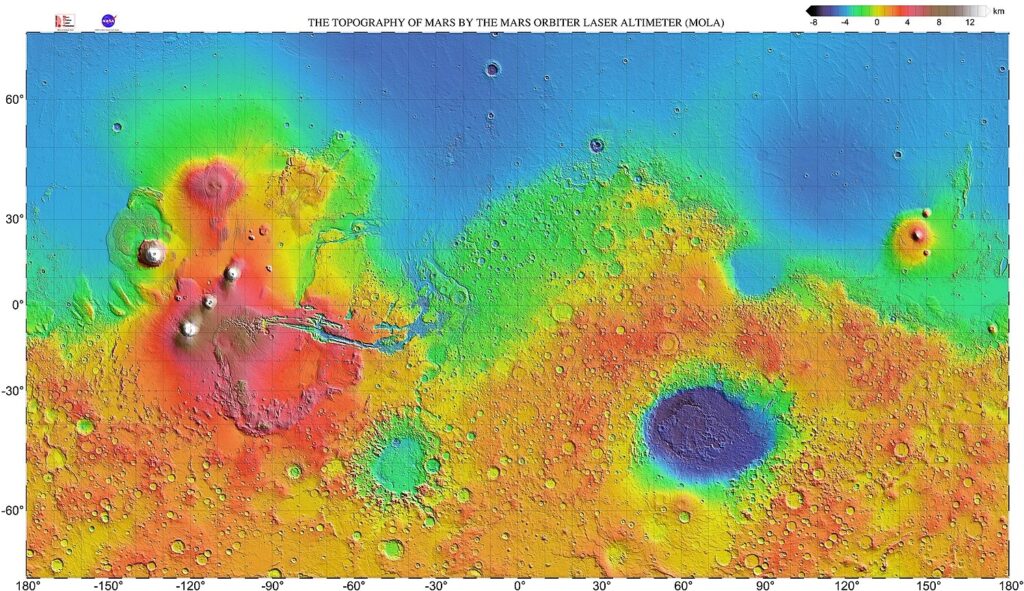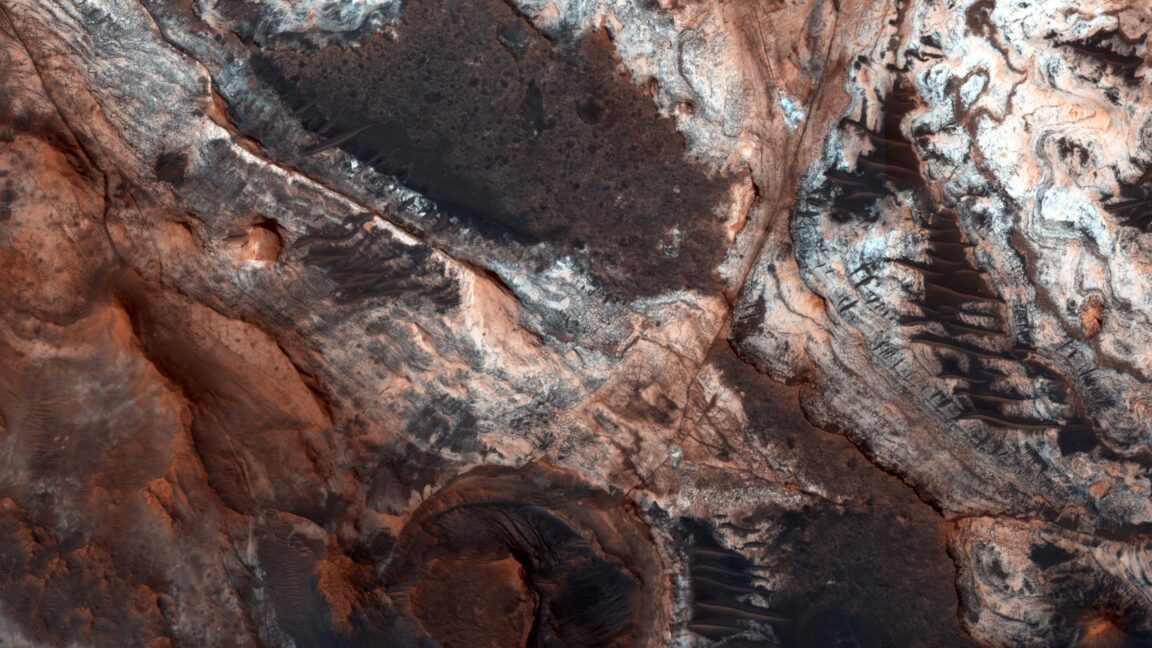What may have been an ancient shoreline has signs of a water-driven transformation.
For decades, we have been imaging the surface of Mars with ever-finer resolution, cataloging a huge range of features on its surface, studying their composition, and, in a few cases, dispatching rovers to make on-the-ground readings. But a catalog of what's present on Mars doesn't give us answers to what's often the key question: how did a given feature get there? In fact, even with all the data we have available, there are a number of major bits of Martian geography that have produced major academic arguments that have yet to be resolved.
In Monday's issue of Nature Geoscience, a team of UK-based researchers tackle a big one: Mars' dichotomy, the somewhat nebulous boundary between its relatively elevated southern half, and the low basin that occupies its northern hemisphere, a feature that some have proposed also served as an ancient shoreline. The new work suggests that the edge of the dichotomy was eroded back by hundreds of kilometers during the time when an ocean might have occupied Mars' northern hemisphere.
Close to the edge
To view the Martian dichotomy, all you need to do is color-code a relief map of the Martian surface, something that NASA has conveniently done for us. Barring a couple of enormous basins, the entire southern hemisphere of the red planet is elevated by a kilometer or more, and sits atop a far thicker crust. With the exception of the volcanic Tharsis region the boundary between these two areas runs roughly along the equator.

There are two mysteries associated with this dichotomy. One is how it got there, with ideas that range from an abortive early form of plate-tectonics to various planet-shaping impact scenarios. The second is whether it served a function early in the planet's history. All indications are that Mars had a warmer, watery past, and there have been proposals that included an ocean filling Mars' northern basin. But that has also been subject to debate.
The new work focuses on an area called Mawrth Vallis, which sits at the edge of the dichotomy. Relative to the northern basin, it's a kilometer-high plateau cut by a major outflow channel that seems to have been caused by one or more massive floods. The slopes surrounding the plateau feature different types of clay-derived minerals, suggesting the area had been subject to interactions between the original materials and water.
Rather than focusing on the plateau itself, the work focuses on the neighboring lowlands, which include a large region dotted with thousands of buttes and mesas that rise roughly a kilometer above the surrounding plains. Using data from the ESA's Mars Express mission, they determine that these features tend to top out at the same height as the nearby plateau. And, using data from NASA's Mars Reconnaissance Orbiter, they determined that the clays present along the slopes match those found on the plateau as well.
Their conclusion from this is that the mesas and buttes are the remains of what was once a far larger plateau, which was largely eroded away on the side facing the northern basin. And that erosion took place across a pretty significant distance, as the buttes extend hundreds of kilometers away from the present highlands.
And, just as at the highland plateau, these mounds hint at a water-based process that modified the rocks from the top down. That's because the deeper clays are often magnesium-rich, which tends to happen when water comes in contact with volcanic rocks or material with similar chemistry. Closer to the surface, things transition to aluminum- and iron-rich clays. These clays can occur when the water source is acidic or can be simply due to longer exposure to water, as the magnesium clays are a bit more soluble.
A shoreline transformed?
The huge area covered by these mounds gives a sense of just how significant this erosion was. "The dichotomy boundary has receded several hundred kilometres," the researchers note. "Nearly all intervening material—approximately 57,000 cubic kilometers over an area of 284,000 square kilometers west of Ares Vallis alone—has been removed, leaving only remnant mounds."
Based on the distribution of the different clays, the team argues that their water-driven formation took place before the erosion of the material. This would indicate that water-rock interactions were going on over a very wide region early in the history of Mars, which likely required an extensive hydrological cycle on the red planet. As the researchers note, a nearby ocean would have improved the chances of exposing this region to water, but the exposure could also have been due to processes like melting at the base of an ice cap.
Complicating matters further, many of the mounds top out below one proposed shoreline of the northern ocean and above a second. It's possible that a receding ocean could have contributed to their erosion. But, at the same time, some of the features of a proposed shoreline now appear to have been caused by the general erosion of the original plateau, and may not be associated with an ocean at all.
Overall, the new results provide mixed evidence for the presence of a Martian ocean. They clearly show an active water cycle and erosion on a massive scale, which are both consistent with having a lot of water around. At the same time, however, the water exposure the mesas and buttes have experienced needn't have come through their being submerged by said ocean and, given their elevation, might best be explained through some other process.
Nature Geoscience, 2019. DOI: 10.1038/s41561-024-01634-8 (About DOIs).
Hope you enjoyed this news post.
Thank you for appreciating my time and effort posting news every day for many years.
News posts... 2023: 5,800+ | 2024: 5,700+
RIP Matrix | Farewell my friend ![]()
- Mutton
-

 1
1



3175x175(CURRENT).thumb.jpg.b05acc060982b36f5891ba728e6d953c.jpg)
Recommended Comments
There are no comments to display.
Join the conversation
You can post now and register later. If you have an account, sign in now to post with your account.
Note: Your post will require moderator approval before it will be visible.